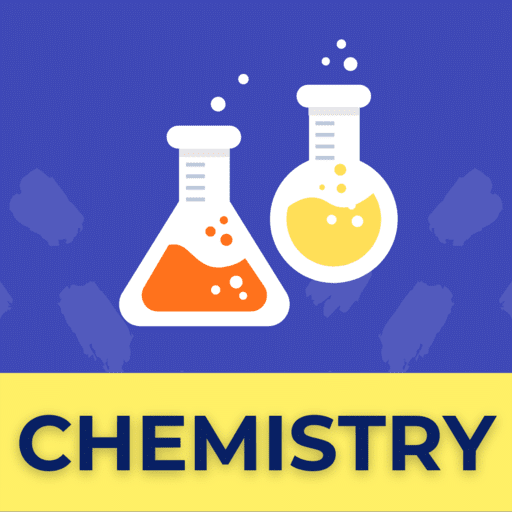Best Study Material for UPSC Exam
UPSC Exam > UPSC Notes > Chemistry Optional Notes for UPSC > Hydration of Alkynes
Hydration of Alkynes | Chemistry Optional Notes for UPSC PDF Download
Introduction
Like alkenes, alkynes can be hydrated by either of two methods. Direct addition of water catalyzed by mercury(II) ion yields the Markovnikov product, and indirect addition of water by a hydroboration–oxidation sequence yields the non-Markovnikov product.
Mercury(II)-Catalyzed Hydration of Alkynes
- Alkynes don’t react directly with aqueous acid but will undergo hydration readily in the presence of mercury(II) sulfate as a Lewis acid catalyst. The reaction occurs with Markovnikov regiochemistry, so the −OH group adds to the more highly substituted carbon and the −H attaches to the less highly substituted one.

- Interestingly, the actual product isolated from alkyne hydration is not a vinylic alcohol, or enol (ene + ol), but is instead a ketone. Although the enol is an intermediate in the reaction, it immediately rearranges into a ketone by a process called keto–enol tautomerism. The individual keto and enol forms are said to be tautomers, a word used to describe two isomers that undergo spontaneous interconversion accompanied by the change in position of a hydrogen. With few exceptions, the keto–enol tautomeric equilibrium lies on the side of the ketone; enols are almost never isolated.

- As shown in Figure 9.4, the mechanism of the mercury(II)-catalyzed alkyne hydration reaction is analogous to the oxymercuration reaction of alkenes. Electrophilic addition of mercury(II) ion to the alkyne gives a vinylic cation, which reacts with water and loses a proton to yield a mercury-containing enol intermediate. In contrast with alkene oxymercuration, however, no treatment with NaBH4 is necessary to remove the mercury. The acidic reaction conditions alone are sufficient to effect replacement of mercury by hydrogen. Tautomerization then gives the ketone.
Figure 9.4 MECHANISM Mechanism of the mercury(II)-catalyzed hydration of an alkyne to yield a ketone. The reaction occurs through initial formation of an intermediate enol, which tautomerizes to the ketone.
- A mixture of both possible ketones results when an unsymmetrically substituted internal alkyne (RC≡CR') is hydrated. The reaction is therefore most useful when applied to a terminal alkyne (RC≡CH) because only a methyl ketone is formed.

Question for Hydration of Alkynes
Try yourself:
What is the purpose of using a bulky, sterically encumbered borane such as disiamylborane in the hydroboration-oxidation of a terminal alkyne?View Solution
Hydroboration–Oxidation of Alkynes
- Borane adds rapidly to an alkyne just as it does to an alkene, and the resulting vinylic borane can be oxidized by H2O2 to give an enol, which tautomerizes to either a ketone or an aldehyde, depending on the alkyne. Hydroboration–oxidation of an internal alkyne such as 3-hexyne is straightforward and gives a ketone, but hydroboration–oxidation of a terminal alkyne is more complex because two molecules of borane often add to the triple bond, complicating the situation. To prevent this double addition, a bulky, sterically encumbered borane such as bis(1,2-dimethylpropyl)borane, known commonly as disiamylborane is used in place of BH3. When a terminal alkyne such as 1-butene reacts with disiamylborane, addition to the triple bond occurs normally, but a second addition is hindered by the bulk of the dialkylborane. Oxidation with H2O2 then gives an enol, which tautomerizes to the aldehyde.

- The hydroboration–oxidation sequence is complementary to the direct, mercury(II)-catalyzed hydration reaction of a terminal alkyne because different products result. Direct hydration with aqueous acid and mercury(II) sulfate leads to a methyl ketone, whereas hydroboration–oxidation of the same terminal alkyne leads to an aldehyde.

Question for Hydration of Alkynes
Try yourself:
What is the product obtained when a terminal alkyne reacts with disiamylborane followed by oxidation with H2O2?View Solution
The document Hydration of Alkynes | Chemistry Optional Notes for UPSC is a part of the UPSC Course Chemistry Optional Notes for UPSC.
All you need of UPSC at this link: UPSC
FAQs on Hydration of Alkynes - Chemistry Optional Notes for UPSC
| 1. What is the purpose of mercury(II)-catalyzed hydration of alkynes? |  |
| 2. How does hydroboration-oxidation of alkynes differ from mercury(II)-catalyzed hydration? |  |
Ans. Hydroboration-oxidation of alkynes involves the addition of borane (BH3) to the carbon-carbon triple bond, followed by oxidation with an oxidizing agent. This process leads to the formation of aldehydes or ketones, whereas mercury(II)-catalyzed hydration directly forms ketones.
| 3. What is the role of mercury(II) in the hydration of alkynes? |  |
Ans. Mercury(II) acts as a catalyst in the hydration of alkynes by facilitating the addition of water molecules to the carbon-carbon triple bond. It helps in breaking the triple bond and forming a mercurinium ion intermediate, which further reacts with water to form the corresponding ketone.
| 4. Are there any limitations or drawbacks of mercury(II)-catalyzed hydration of alkynes? |  |
Ans. Yes, there are some limitations and drawbacks of mercury(II)-catalyzed hydration of alkynes. Mercury(II) is a toxic metal and poses environmental concerns. Additionally, the reaction conditions require the use of strong acids, which can lead to side reactions and undesired by-products. Therefore, alternative methods have been developed to avoid the use of mercury(II) and improve the efficiency of alkynes hydration.
| 5. How can the hydration of alkynes be useful in organic synthesis? |  |
Ans. The hydration of alkynes is a valuable tool in organic synthesis as it allows the formation of carbonyl compounds or ketones. Ketones are versatile functional groups that can participate in various reactions, such as nucleophilic addition, reduction, and condensation reactions. By controlling the reaction conditions and choice of starting materials, chemists can selectively obtain specific ketones, enabling the synthesis of complex organic molecules with desired properties.
Related Searches































